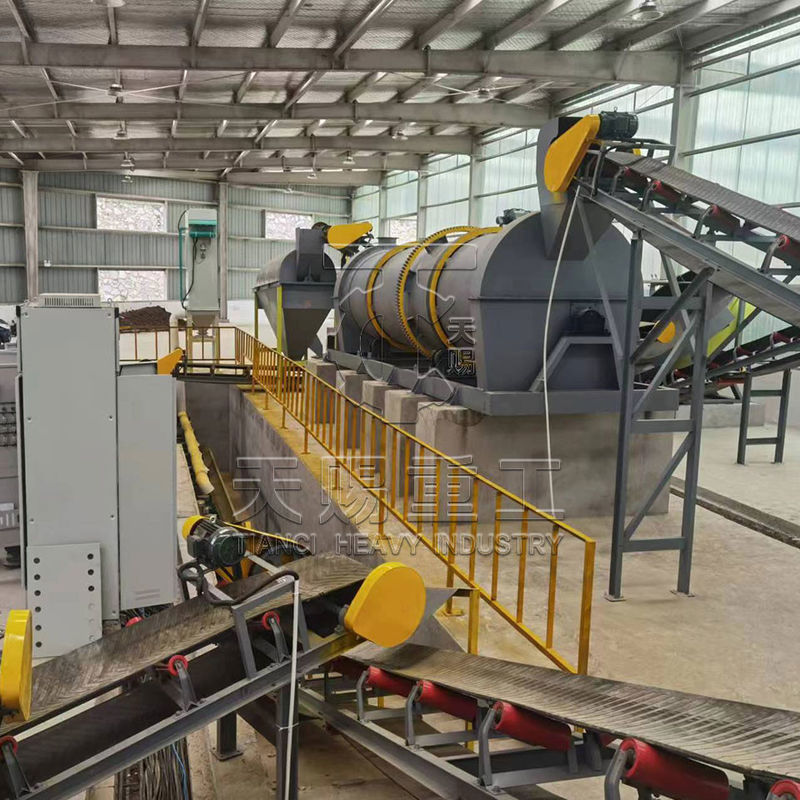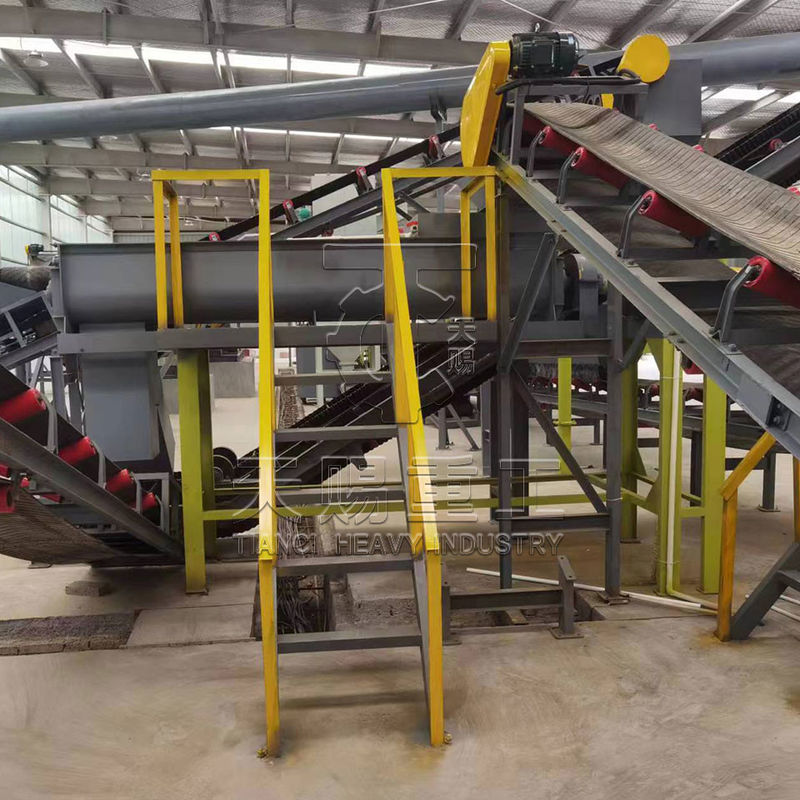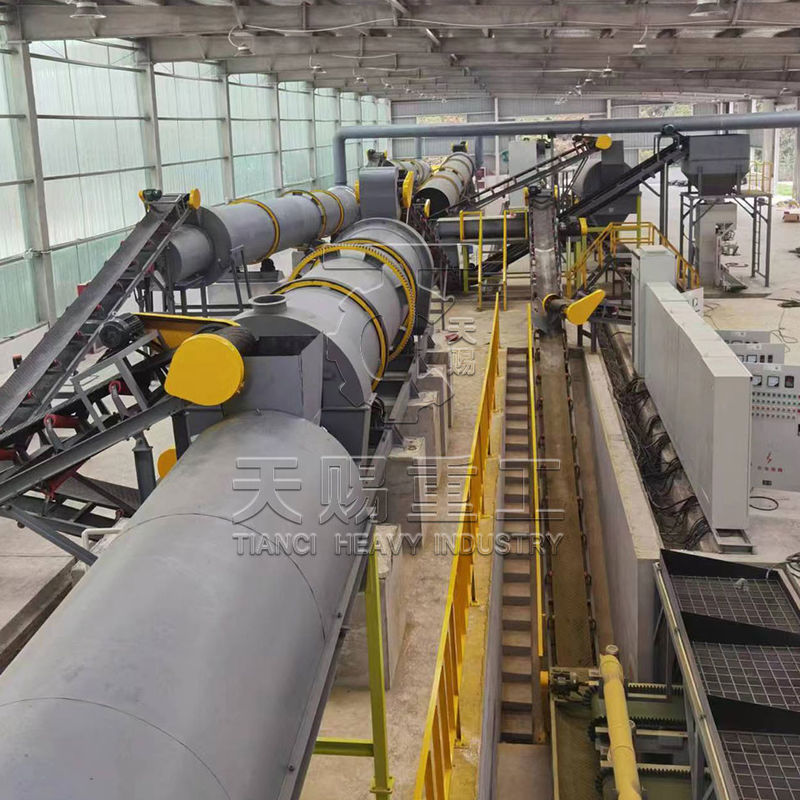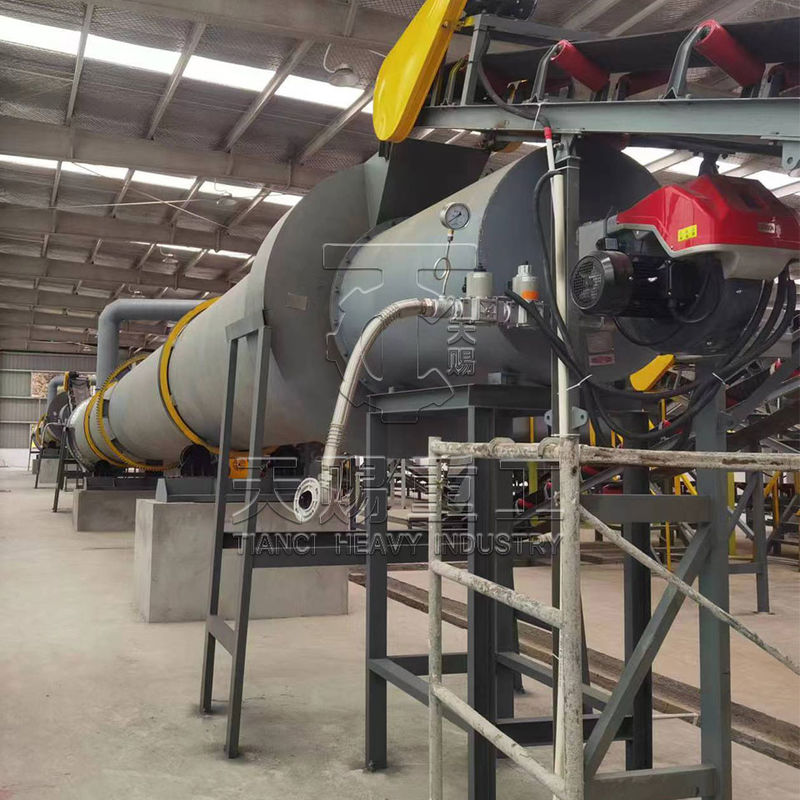Cow dung organic fertilizer production line introduction
The cow dung organic fertilizer production line is a complete production system for converting cow dung into organic fertilizer, covering key links such as raw material processing, fermentation and composting, and processing and granulation. Through the above production line design, cow dung can be converted into high-value-added organic fertilizer, realizing the resource utilization of breeding waste and meeting the demand for green fertilizer in modern agriculture. In actual construction, it is necessary to select appropriate equipment configuration based on the amount of raw materials, site conditions and market demand.

Raw material processing • Collection and pretreatment • Cow dung is the main raw material and usually needs to be collected from farms, slaughterhouses, etc. When collecting, pay attention to the water content of cow dung. Generally, fresh cow dung has a high water content, which may be around 70% - 80%. In order to facilitate subsequent processing, the cow dung needs to be initially separated into solid and liquid. Screening equipment can be used to separate the solid part such as crude fiber and undigested grass in the cow dung from the liquid part. The solid part is the main raw material for making organic fertilizer, and the liquid part can be used for irrigation or further processing after treatment. • In addition to cow dung, some auxiliary materials such as straw and sawdust can also be added. These auxiliary materials can adjust the carbon-nitrogen ratio of the raw materials. Generally speaking, the carbon-nitrogen ratio of the raw materials for making organic fertilizer is more suitable at 20 - 30:1. For example, the carbon-nitrogen ratio of cow dung is usually around 10 - 15:1, while the carbon-nitrogen ratio of straw is around 50 - 100:1. Through reasonable ratio, a suitable carbon-nitrogen ratio can be achieved, which is conducive to the fermentation of microorganisms. • Raw material mixing • Mix the treated cow dung and auxiliary materials in a certain proportion. Mixing equipment includes horizontal mixers, etc., which can ensure that the raw materials are fully mixed so that the microorganisms can evenly decompose organic matter during the fermentation process. The moisture content of the mixed raw materials should be controlled at about 40% - 60%. This moisture content range is conducive to the growth and reproduction of microorganisms and the fermentation process.
The following is a detailed introduction to the cow dung organic fertilizer production line process, main equipment and production points:
Overall framework of organic fertilizer production line
|
graph TD
A[Raw material collection] --> B[Pretreatment system]
B --> C[fermentation system]
C --> D[crushing and screening]
D --> E[Ingredients Mixing]
E --> F[Granulation system]
F --> G[Dry Cooling]
G --> H[Screening and Packaging]
H --> I[Finished product storage]
|
Detailed description of process flow chart
|
Process stage
|
Device Configuration
|
Process Purpose
|
Technical parameter examples
|
|
1. Raw material collection
|
Loader, transporter
|
Collect goat manure and temporarily store it in the raw material yard
|
Moisture content control: 60%-70%
|
|
2. Pretreatment system
|
Crusher, mixer, conditioning device
|
Crush feces lumps, adjust moisture content (add straw, sawdust and other auxiliary materials), mix fermentation agents
|
The ratio of auxiliary materials added: feces: straw = 3:1
|
|
3. Fermentation system
|
Tank fermentation equipment/drum fermentation machine
|
Aerobic fermentation of feces kills germs and insect eggs and degrades organic matter
|
Fermentation temperature: 55-70℃, cycle 7-15 days
|
|
4. Crushing and screening
|
Crusher, vibrating screen
|
Crush the decomposed materials to a particle size of ≤5mm and remove impurities (such as stones and undecomposed crude fibers)
|
Crushed particle size: 80% passing through 2mm sieve
|
|
5. Mix the ingredients
|
Electronic batching scale, horizontal mixer
|
Add nitrogen, phosphorus and potassium raw materials (such as bone meal and wood ash) according to the formula and mix evenly
|
Mixing uniformity: coefficient of variation ≤5%
|
|
6. Granulation system
|
Disc Granulator/ Extrusion Granulator
|
Make the mixed materials into granules (to improve the convenience of transportation and application)
|
Particle diameter: 2-4mm, granulation rate ≥90%
|
|
7. Drying and cooling
|
Rotary dryer, cooling conveyor
|
Reduce the moisture content of the particles to ≤15% and cool to room temperature to prevent agglomeration.
|
Drying temperature: 80-120℃, temperature difference after cooling ≤5℃
|
|
8. Screening and packaging
|
Drum screen, automatic packaging machine
|
Screen out unqualified particles (too large or too small) and pack according to specifications (5kg/bag, 25kg/bag, etc.)
|
Packaging accuracy: ±0.5kg/bag
|
|
9. Finished product storage
|
Storage racks, ventilation systems
|
Finished products are stored in categories to prevent moisture, rodents and ventilation.
|
Storage environment: humidity ≤ 60%, temperature ≤ 30℃
|
Schematic diagram of key process nodes
1. Fermentation system process details
|
graph LR
subgraph Tank Fermentation Process
S1[feeding] --> S2[compacting machine turning]
S2 --> S3 [Temperature sensor monitoring]
S3 --> S4 [ventilation and oxygen supply]
S4 --> S5 [Matured material discharge]
end
|
• Core technology : Regularly turning the pile with a compost turner (once every 24 hours) combined with forced ventilation to maintain an aerobic fermentation environment.
2. Granulation system equipment layout
|
graph TD
subgraph Disc Granulator
P1[Raw material conveying] --> P2[Disc granulator]
P2 --> P3 [Particle screening]
P3 --> P4 [return material]
P4 --> P2
end
|
• Circular logic : Unqualified particles (oversize + undersize) are returned to the granulator for reprocessing to improve the granulation rate.
Production line technical indicators comparison table
|
Indicator Type
|
Small production line (1-5t/h)
|
Medium-sized production line (5-10t/h)
|
Large production line (above 10t/h)
|
|
Total installed power
|
30-50kW
|
80-120kW
|
150-200kW+
|
|
Area
|
500-800㎡
|
1000-1500㎡
|
2000㎡ and above
|
|
Investment cost
|
500,000-800,000 yuan
|
1 million to 1.5 million yuan
|
More than 2 million yuan
|
|
Organic fertilizer finished product nutrients
|
N+P₂O₅+K₂O≥5%, organic matter≥45%
|
Same as above
|
Same as above
|
Production scene of Tianci Heavy Industry

Delivery

FAQ
Q: What are the typical raw materials used in this production line?
A: The raw materials used in the Organic Fertilizer Granules Production Line include compost manure, farm waste, city garbage, and other organic materials.
Q: What is the capacity range of this production line?
A: The capacity of the Organic Fertilizer Granules Production Line ranges from 1 to 300 tons per hour.
Q: What is the maximum allowable humidity level for raw materials in this production line?
A: The maximum allowable humidity level for raw materials in the Organic Fertilizer Granules Production Line is ≤30%.
Q: Is this production line automated?
A: Yes, the Organic Fertilizer Granules Production Line is fully automatic, minimizing manual intervention and maximizing efficiency.
Q: What are the key steps involved in the production process?
A: The production process of the Organic Fertilizer Granules Production Line includes crushing, mixing, granulating, screening, and packaging.
Q: What is the shape of the granules produced by this production line?
A: The granules produced by the Organic Fertilizer Granules Production Line have a ball-type shape.

 Your message must be between 20-3,000 characters!
Your message must be between 20-3,000 characters! Please check your E-mail!
Please check your E-mail!  Your message must be between 20-3,000 characters!
Your message must be between 20-3,000 characters! Please check your E-mail!
Please check your E-mail! 




